Return to 2nd Quarter 2019 articles.
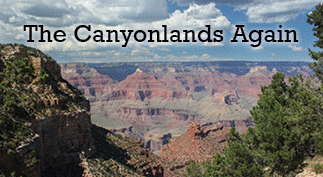
On Sunday, September 9, 2018, we began our 36th “Canyonlands Educational Tour.” Since 1968 we have been taking what I call field trips into the Grand Canyon National Park and the areas that surround the canyon — Bryce Canyon, Zion, Petrified Forest (including the Painted Desert) national parks, including Lake Powell, Meteor Crater, and the areas that surround all of these places.
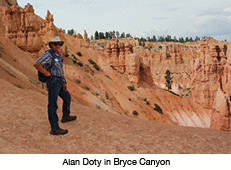
My constant companion and technical expert has been Alan Doty from Sedona, Arizona, who holds advanced degrees in geology and has been a well-known figure in the Canyonlands area and an active Christian. Alan has made over 300 trips to the bottom of the Grand Canyon and was the first to climb Isis Temple. His knowledge of the area is second to none. Our trips into this area have included four boat rides floating the Colorado River through the Grand Canyon, ten bus trips in which we spend a day at each of the sites of interest, and 16 hikes into points of interest in the Canyonlands area. We have prepared field trip guides and have conducted studies and lectures on all of these trips.
Why do we do this? The Does God Exist? ministry is dedicated to providing evidence to convince thinking people that science is a friend of faith in God, and that science and the Bible do not conflict. As educators in the public schools, we have seen a great deal of bad science and bad theology combine to destroy the faith of many young people. There is no area where more bad science and bad theology have been promoted than in the Canyonlands area. Not understanding the evidence and not taking the Bible literally has been a major source of conflict for many people. Taking the Bible literally means looking at who wrote the passage, to whom they wrote it, why they wrote it, and how people of the time would have understood it.
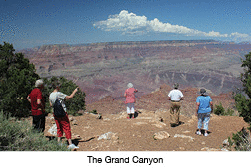
Having a week of concentrated study in one of the greatest natural science laboratories on Earth is a wonderful way to combat bad science and bad theology. It is also our hope that participants will go back home and use what they have learned in our seminars. We want them to build the faith of people in their home congregations and combat the efforts of local skeptics to discredit the Bible and destroy faith in God.
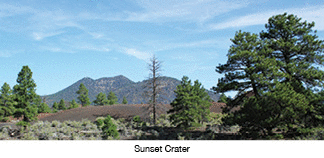
Our trip in 2018 was a bus tour in which 50 people participated. We departed from Flagstaff, Arizona. That area allows us to study the basic rocks from which all other rocks are made — and that is volcanic material. Our analysis of rocks in space and of the minerals in the crust of the earth show us that all rocks are made of materials found in the interior of the Earth. Granite, for example, is made up of quartz which when it is broken down makes sand and thus sandstone. Orthoclase is another constituent that is found in granite, and it weathers to produce clay which is a major part of shale. Visiting Sunset Crater and seeing the volcanic mountains surrounding Flagstaff allows us to understand the method by which all other rocks were produced.
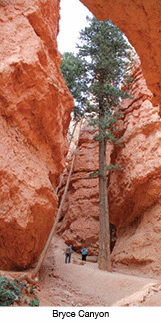
The first session of our trip was held on Sunday evening before we departed. In that session, we pointed out the one basic assumption that underlies our entire trip. That assumption is that God is not a magician who does everything by sleight of hand and magic. God is more of an engineer, who uses natural processes to produce things in the creation. The Bible tells us that “God planted a garden” (Genesis 2:8) not that he waved a magic wand and a garden appeared. When God created man’s body in Genesis 2:7, he “formed man of the dust of the earth.” The Hebrew word used to describe that process is yatshir which is a word denoting something an artist might do in creating a work of pottery. God did not “zap” the Grand Canyon into existence with all its many kinds of rocks and embedded fossils. Many religious people want to have God “speaking” these things into existence, even though the Bible indicates God commanded the creation elements indicating that other agents were doing the actual work. In our twenty-first-century mentality of rejecting scams and con artists, it is important not to put God into the role of being a trickster. God did his creating processes in such a way that he can tell us to know he exists through the things he has made (Romans 1:20). Wisdom speaks of God’s engineering skills in Proverbs 8.
Our approach to all of the evidence of the creation and all of the scriptures that explain what happened MUST agree. If the same God who gave us the Bible also did the creating, they cannot disagree. If there seems to be a conflict between the scientific evidence and what the Bible says, we either have bad science or bad theology or both.
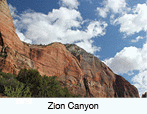
Because so many denominations have a theology that maintains that God is going to institute a physical kingdom with Jesus being the ruler of that physical kingdom, there has been great conflict between the physical evidence that Earth is very old and the creation week of the Bible. As we visit the Grand Canyon, Bryce Canyon, Zion Canyon, Petrified Forest and Painted Desert the massive amount of evidence that Earth is much older than 6,000 years old becomes very apparent. So how do those of us who are not locked into denominational belief systems resolve this apparent conflict? The answer is to take the Bible literally. Look at who wrote it, who they wrote it to, why they wrote it, and how the people it was written to would have understood it.
The answer to the questions is revealing. Genesis was written in the style of Hebrew poetry to all of humanity — those living in the days of Moses as well as those living in the twenty-first century. We cannot expect the account to deal with quantum mechanics, because the people of Moses’ day would have had no way to understand it. The animals that are described in Genesis are animals that people of the time of Moses would know existed. Do not look for duck-billed platypuses, echidnas, or walking birds like an ostrich or a penguin, or a dinosaur in the Genesis account. Do not look for stellar production of heavy elements by nuclear fusion, continental drift, or stellar evolution like the Hertzsprung-Russell diagram. Hundreds of things can be listed that would not be expected in the biblical account because the ancient Israelites would have no way to understand it.

With that in mind, we would not understand a long, tedious discussion of how Earth was prepared for humans. Genesis 1:1 answers that question in one sentence, “reshith elohim bara shamayan erets.” That is Hebrew for, “In the beginning, God created the heaven and the earth.” This is a historical statement which says there was a beginning to everything in space and on Earth. It tells us that everything was caused by God acting to accomplish a planet with everything that humans would need to exist including water, coal, oxygen, oil, nitrates, etc. Erets refers to a functional Earth, not to a blob of guck.
As we drive through the Canyonlands, we see how this has been accomplished, and that physical, chemical, and biological agents have been involved. It is interesting to see that dinosaurs, as well as many microscopic forms of life, were the gardeners who made all of this happen. Without dinosaurs, there would have been no agents to process the giant plants of that day and spread their seeds. Without diatoms, there would have been no agents present to form the oil and other fossil fuels that we need. Notice that this verse is untimed and undated! How long did it take? When did it happen? The Bible does not say.

When the second creation occurs in the “creation week” there is a specific explanation of where the plants, water creatures, cattle, goats and sheep, chickens and ducks, etc., of ancient Israelites came from. The first thing that happens is that the earth is formed. This is the same word as in Genesis 1:1 translated from the Hebrew word erets. This second usage is clearly different, however, because Genesis 1:9-10 indicates this earth is separated from the water confining it to the earth (land) people live on, not the planet itself.
The rest of the Genesis account uses the creation week to identify the sequence in which God prepared the animals that Israel knew. Each Hebrew word refers to domesticated animals, not unknown animals. Days are used to provide continuity to the sequence with which the life is created. How long those days were, whether they were in sequence or had long time periods between them can be debated endlessly. This is a creation of the animals that Israel knew.
Genesis 1:1 describes the creation made by God with the things humans would need to survive on Earth, and it is untimed and undated. All of the studies of geologists and biologists as to how those resources were produced are answered in Genesis 1:1. The creation week is a description of the actual production of humans and the animals they domesticated.
Our trip into the Canyonlands area allows us to see God’s power, wisdom, and planning that made it possible for us to exist. Proverbs 8 shows that wisdom is the causal agent of creation — not blind, mechanistic chance. Theological claims that create conflict between God’s word and the display of his wisdom and design are due to human error, not to the Creator.
Picture credits:
Photos in this article: Roland Earnst
Scripture links/references are from BibleGateway.com. Unhighlighted scriptures can be looked up at their website.
